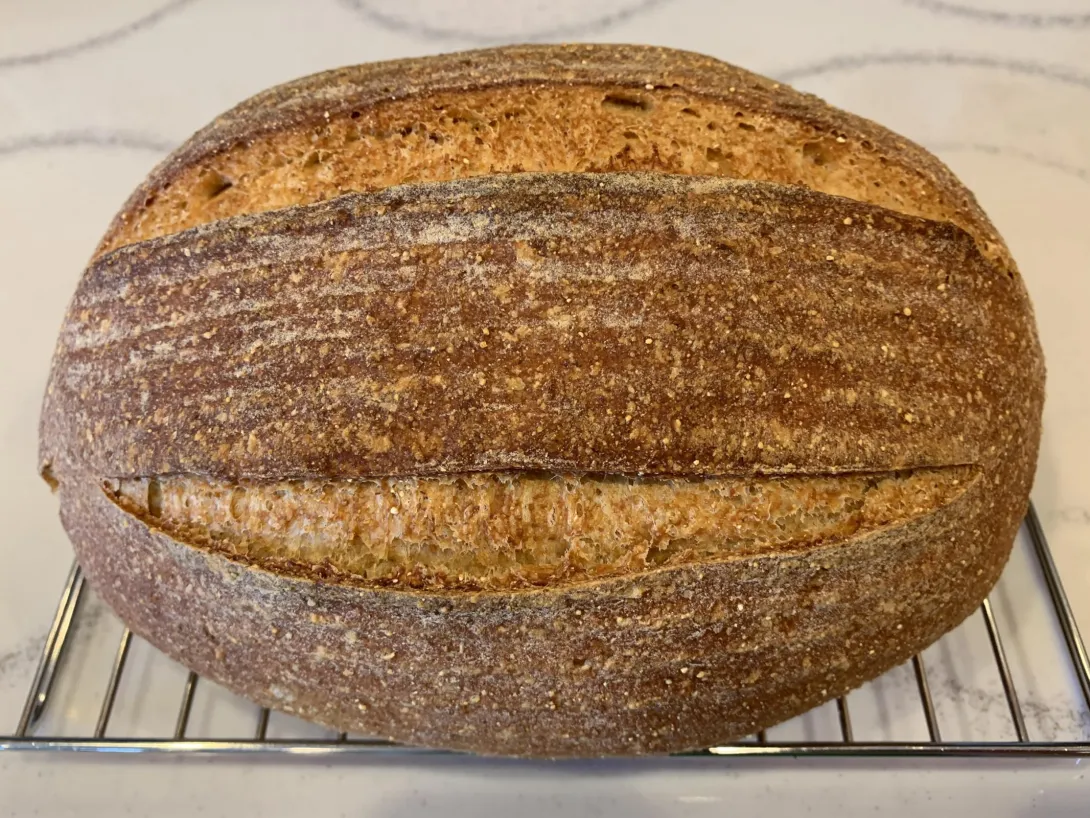
TFL'ers bakes list... Week #3. This week's bake was inspired by Abe's Dip and Dab Polenta Sourdough. Plan A was to follow this bake as described. However, I had a great pour of bourbon last week with a friend who's into it a bit. That led to a discussion on what it takes for a whiskey to be classified a bourbon. One of those "rules" is that the mash has to be >51% corn. In addition, this was a high rye bourbon. And... An idea was born.
I already had the rye, and I stopped to pick up some polenta (or corn meal to make some). However, the co-op had a high lysine corn flour, so I grabbed that instead.
Mixed up a 60:40 (corn:rye) mash and cooked it per Reinhart's method for 2 hours. Definitely had a corn smell to it.
Started bulk late and let it go over night. When I got up, the aliquot was showing 25%, but the dough didn't look overly puffy. Was not abnormally high on the sides of my usual bulk ferment bowl, but did seem high in the center of the bowl. Gave it the 2nd kneading, On each of the subsequent kneadings, the dough hardly spread. The aliquot jar was rising rapidly, but I didn't see it in the dough. It was staying tall in the center of the bowl, but it wasn't spreading like I'm used to seeing. Therefore, I thought the aliquot was misleading. However, the dough was relaxed and I did notice gas bubbles in the bulk of the dough on the 3rd kneading. Didn't really know where I was at, so I shaped it when the aliquot was at 75%.
During final proofing, the dough continued to take off, but also did not spread. I moved to cold retard when the aliquot was at 100%. The center of the dough was well over the banneton rim, but didn't rise much on the ends. It continued to rise during cold retard, and looked like a football before removing from the banneton. So, in hind sight, the aliquot was probably correct. This dough fermented really fast and actively. Not sure if it was extra sugar from the corn mash or if extra microbes from the corn flour. It's by far the fastest and most active fermentation I've had on any of my bakes.
Baked up nice with good color in the crust. It filled out nicely, but not a ton of oven spring. Guessing this one is going to be close to being overproofed. Will see in the morning when I slice it. Really curious to see how this one tastes!
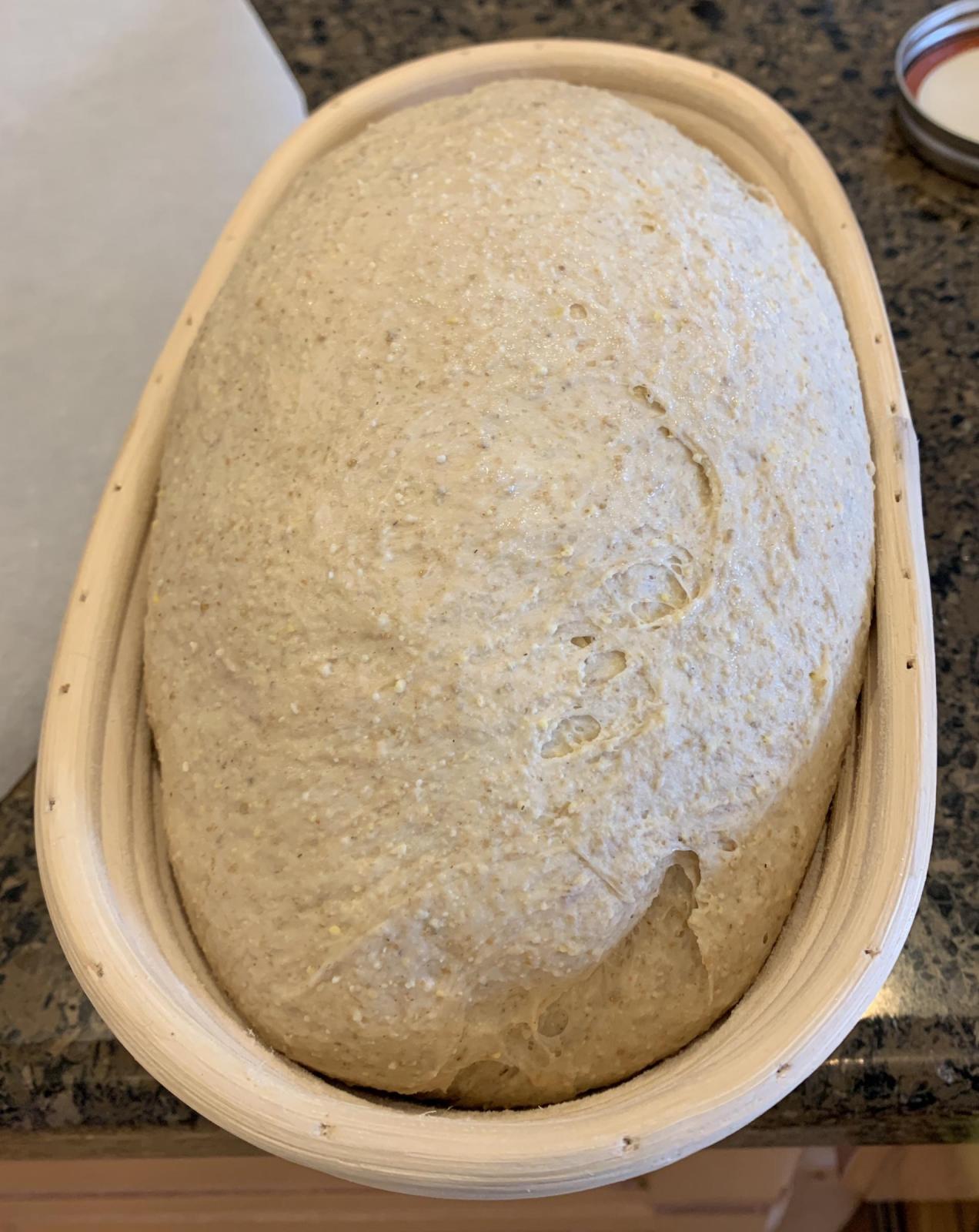
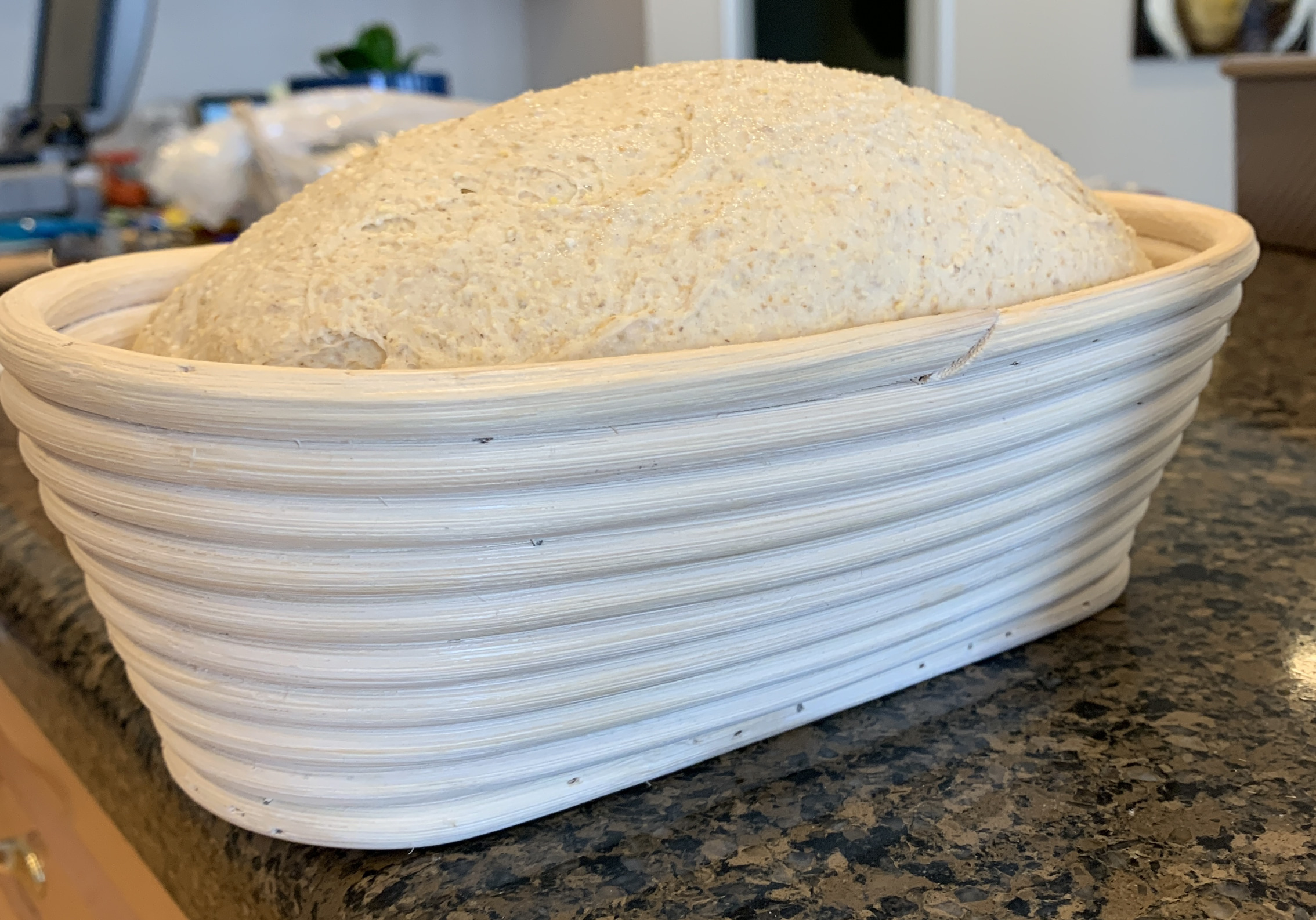
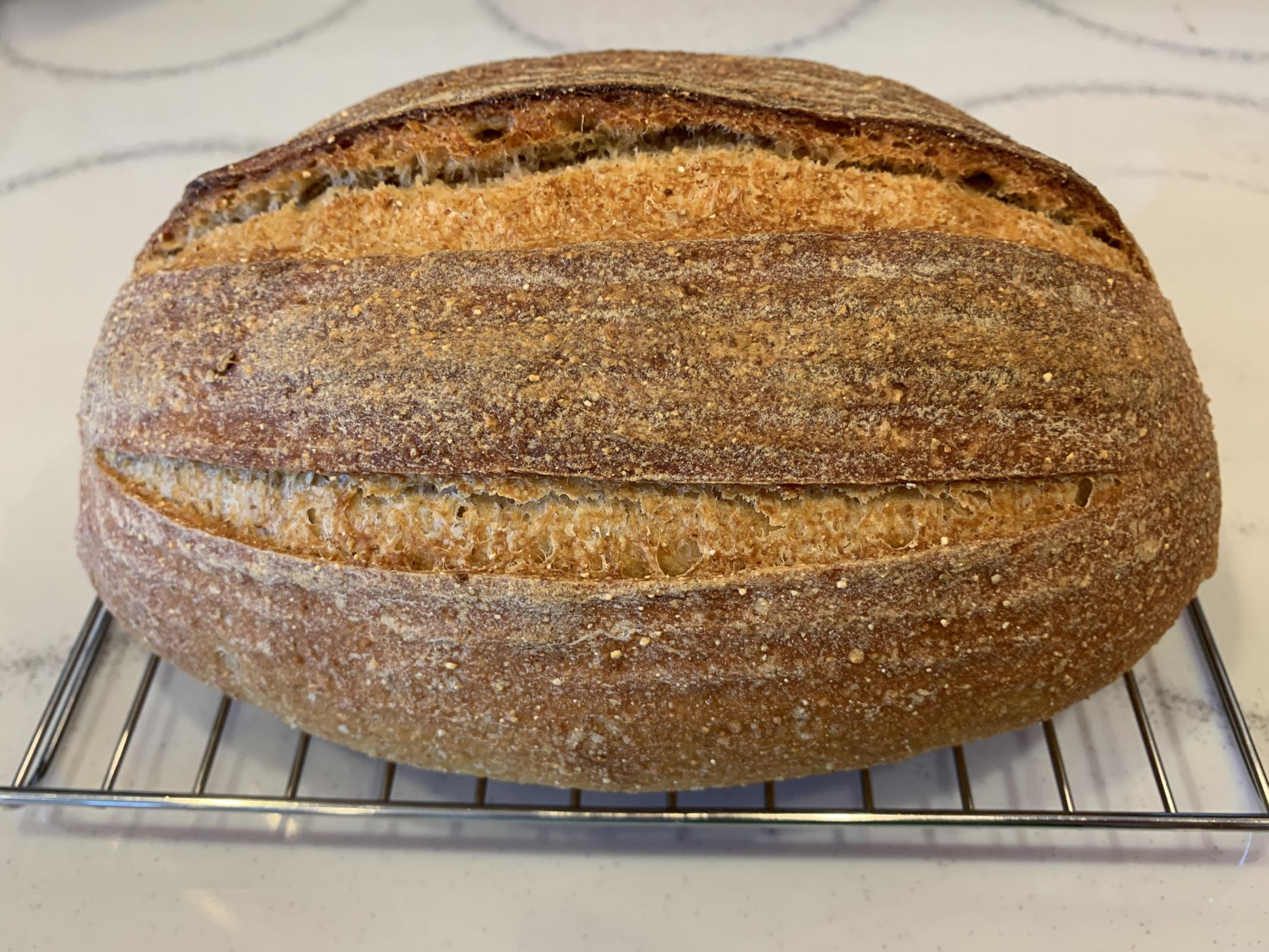
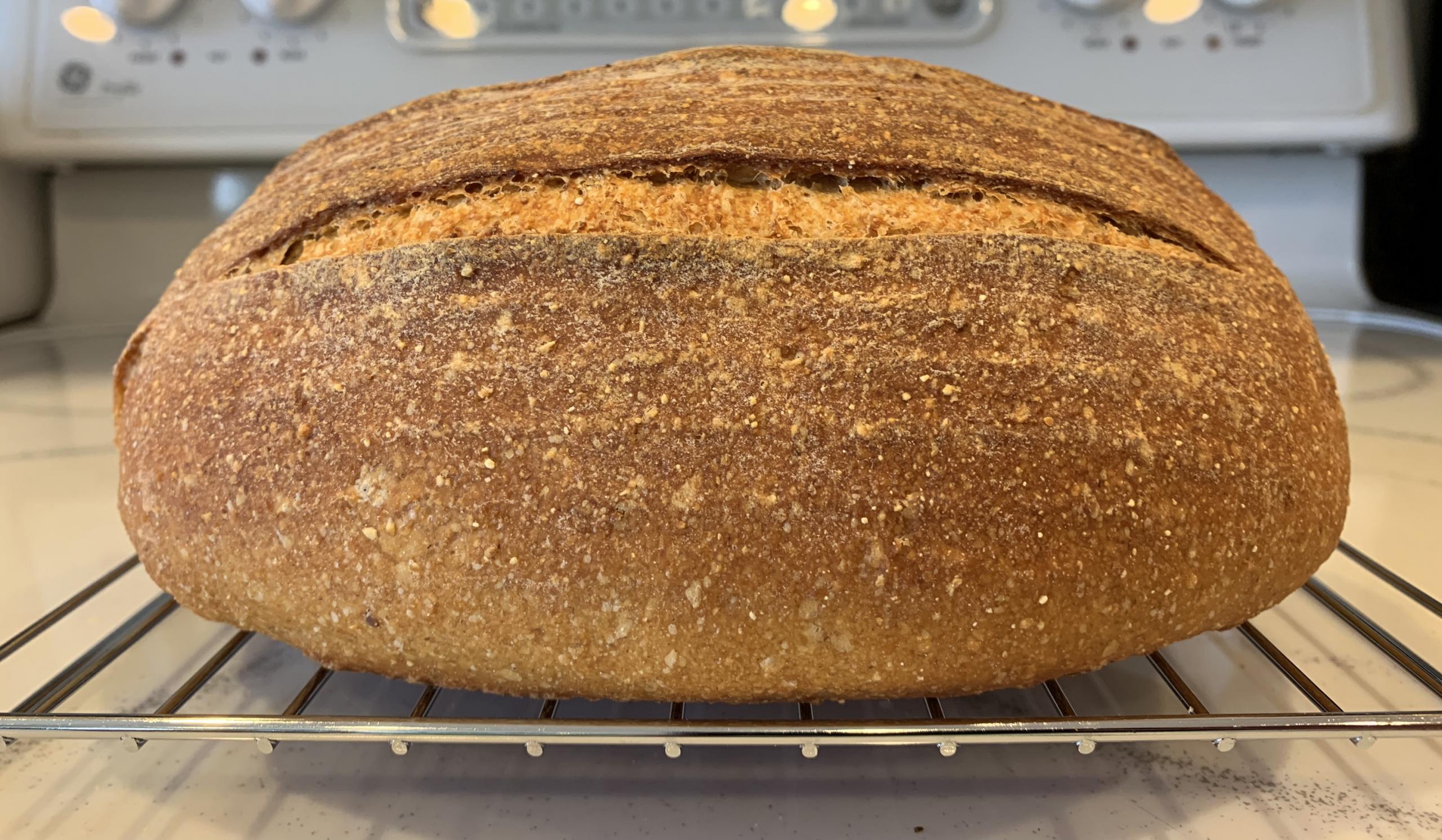
- HeiHei29er's Blog
- Log in or register to post comments
The taste was not what I was expecting either. Tasted like a good brown bread, but I didn’t get any corn flavor. Guess the rye overpowered it? I was expecting something like a corn bread muffin type flavor (or at least a hint of that).
The crumb is soft and moist with no gumminess at all! This one will go back on the bake list, but with a higher ratio of corn in the mash.
Good looking bake Troy. I think I would read it as underhydrated if I were to guess. You gave some clues early on with how the dough wasn’t spreading as you’re used to. I also agree that it isn’t overproofed either. I’ve had this with doughs that were too low in hydration.
Benny
Thanks Benny, and good call. I didn’t think about hydration. Might have to go up a couple percent next time.
This is inspiring me to look at other things in my kitchen and think of baking them into a bread.
Do you think the high lysine might also have affected fermentation? Would be interesting to compare with a regular corn flour.
It was a fun bake that I’ll do again for sure.
Not sure if lysine would impact fermentation. My understanding is that high lysine is higher protein content. Not sure if that impacts fermentation. My best guess at this time is that the mash released more sugars from the corn and the rye. But again, that’s only a guess. 😁